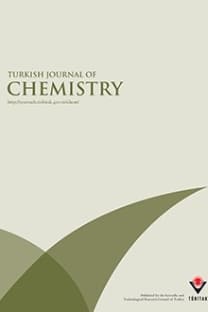Kinetics and performance studies of a switchable solvent TMG (1,1,3,3-tetramethylguanidine)/1-propanol/carbon dioxide system
Binding organic liquids, carbon capture, reaction kinetics, reaction mechanism, stopped-flow method, switchable solvents, 1, 1, 3, 3-tetramethylguanidine
Kinetics and performance studies of a switchable solvent TMG (1,1,3,3-tetramethylguanidine)/1-propanol/carbon dioxide system
Binding organic liquids, carbon capture, reaction kinetics, reaction mechanism, stopped-flow method, switchable solvents, 1, 1, 3, 3-tetramethylguanidine,
___
- TMG/1-propanol This work Ozturk et al., 201440 0.98 1 76 61 67 EA(kJ/mol) 0.99 130 23 Experimental
- Heldebrant, D. J.; Koech, P. K.; Rainbolt, J. E.; Zheng, R. 10th International Conference on Greenhouse Gas Control Technologies, Amsterdam, the Netherlands, 19–23 September 2010; Gale, J.; Hendriks, C.; Turkenberg,
- W., Eds; Elsevier: Amsterdam, 2011, p. 216–223.
- Ozturk, M. C.; Ume, C. S.; Alper, E. Chem. Eng. Technol. 2012, 35, 2093–2098.
- Caplow, M. J. Am. Chem. Soc. 1968, 90, 6795–6803.
- Danckwerts, P. V. Chem. Eng. Sci. 1979, 34, 443–446.
- Ume, C. S.; Alper, E.; Gordesli, F. P. Int. J. Chem. Kinet. 2013, 45, 161–167.
- Davis, R. A.; Sandall, O. C. Chem. Eng. Sci. 1993, 48, 3187–3193.
- Crooks, J. E.; Donnellan, J. P . J. Chem. Soc. Perk. T. 1989, 2, 331–333.
- Alper, E. Chem. Eng. J. Bioch. Eng. 1990, 44, 107–111. da Silva, E. F.; Svendsen, H. F. Ind. Eng. Chem. Res. 2004, 43, 3413–3418.
- Arslan, B. Master of Science Thesis, Faculty of Engineering, Hacettepe University, Turkey, 2012.
- Alper, E. Ind. Eng. Chem. Res. 1990, 29, 1725–1728.
- Ozturk, M. C.; Yuksel Orhan O.; Alper, E. Int. J. Greenh. Gas Con. 2014, 26, 76–82.
- (http://dx.doi.org/10.1016/j.ijggc.2014.04.023).
- ISSN: 1300-0527
- Yayın Aralığı: 6
- Yayıncı: TÜBİTAK
Liangru YANG, Huanyu BIAN, Wenpeng MAI, Pu MAO, Yongmei XIAO, Dong WEI, Lingbo QU
Kaan KÜÇÜKOĞLU, Hatice SEÇİNTİ, Aykut ÖZGÜR, Hasan SEÇEN, Yusuf TUTAR
Hasan KÜÇÜKBAY, Ülkü YILMAZ, Orhan BÜYÜKGÜNGÖR, Mehmet AKKURT
Melek PAMUK ALGI, Atilla CİHANER, Fatih ALGI
Murat ATEŞ, Nesimi ULUDAĞ, Fatih ARICAN, Tolga KARAZEHİR
Reduction behavior of fenoxaprop-p-ethyl and its voltammetric determination
